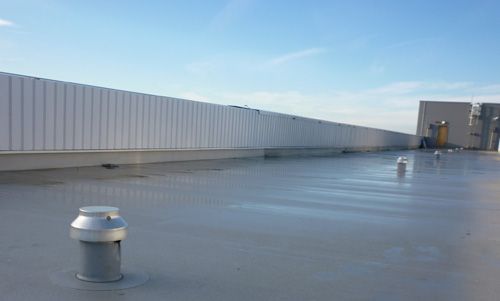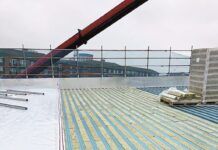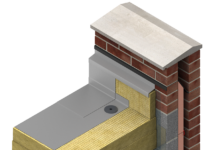 Protan says its vacuum system is the only single ply roofing method to harness natural air movement to provide adhesion.
Protan says its vacuum system is the only single ply roofing method to harness natural air movement to provide adhesion.
The fully warranty-covered system optimises air movement across the roof to create suction and hold the membrane in place, so the stronger the wind, the more the membrane adheres to the roof structure.
Protan’s vacuum system works by loose-laying Protan membrane over an airtight, load-bearing vapour control layer, on top of a metal or concrete sealed deck, inserting the vacuum vents across the main roof area, and mechanically fixing at perimeter and penetrations. As air moves across the roof, any air between the membrane and airtight substrate below is sucked out, causing the single ply to ‘stick’ to the roof.
The process, combined with the reduced number of fixings, delivers faster installation and reduced labour time, making it cost-comparable with alternative techniques. As the construction process avoids penetration of the support structure and vapour control layer, and requires an airtight base, the system can help achieve, or exceed, the requirements of Building Regulations Approved Document L.
With a tensile strength of ≥ 1050 N/50 mm, and tear resistance of ≥ 210N, Protan SE membrane – as the key element of the PROVAC system – will resist most wind forces. UV stable, the membrane is also exceptionally flexible, still being formable at temperatures ≤ -30°C.
Fraser Maitland, Protan UK managing director, observes, “It seems most winters we are subjected to high winds, causing £millions of damage as roofs are ripped off. Even without such seasonal weather considerations, our geography means many areas of the country are subjected to high wind loadings. Our vacuum system gives an assured solution to ensuring the roof stays in place, however gusty the weather.
“Protan is one of the top membrane manufacturers in Europe, and developed the vacuum system to provide an effective, value, solution to single ply roofing in the continent, especially Scandinavia, where winds equivalent to a category 4 hurricane have been experienced in the past few years.”



